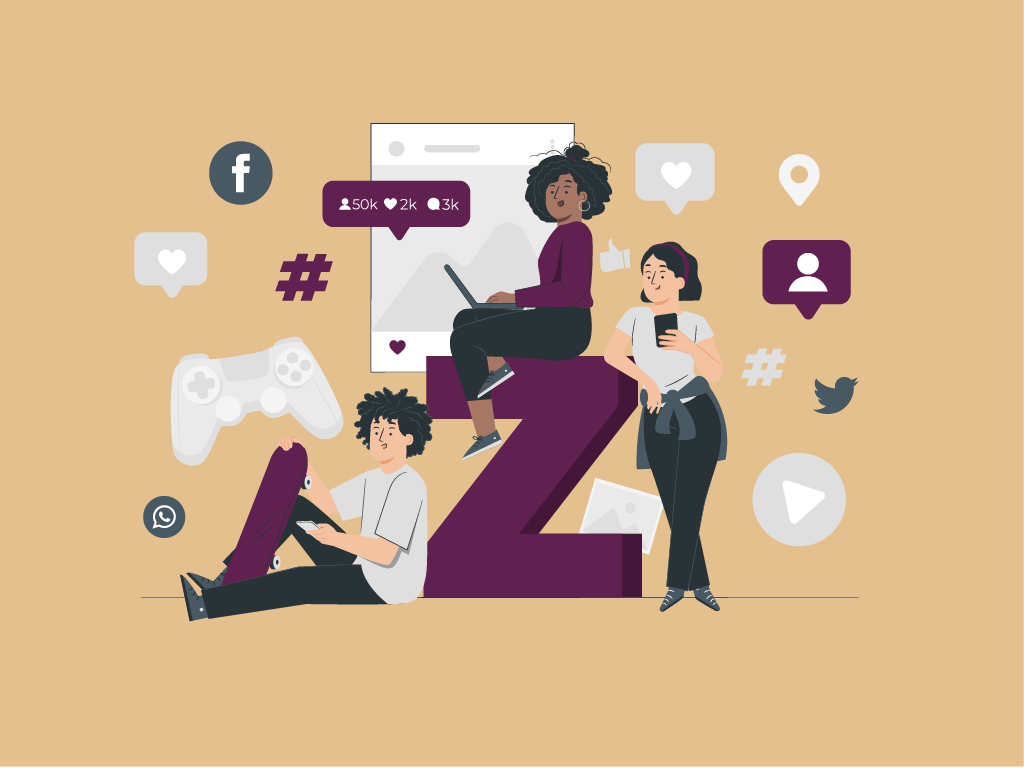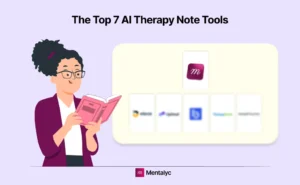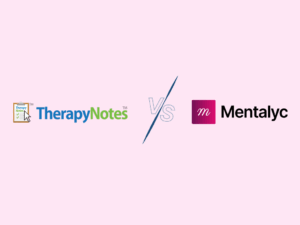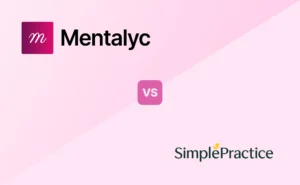Z codes are part of the ICD-10 system used by doctors and therapists to describe social or life situations that affect an individual’s health. They are not about a mental disorder, but they give helpful background information about what is happening in a person’s life.
Mental health is closely connected to a person’s everyday life. Where someone lives, who they live with, how safe or stable their home is, and what problems they’re dealing with all affect how they feel emotionally. When someone comes in for therapy, their struggles are often about much more than just a diagnosis.
Why other mental health professionals love Mentalyc

“By the end of the day, usually by the end of the session, I have my documentation done. I have a thorough, comprehensive note … It’s just saving me hours every week.”
CDCII

“It’s so quick and easy to do notes now … I used to stay late two hours to finish my notes. Now it’s a breeze.”
Licensed Professional Counselor

“It takes me less than 5 minutes to complete notes … it’s a huge time saver, a huge stress reliever.”
Licensed Marriage and Family Therapist

“Having Mentalyc take away some of the work from me has allowed me to be more present when I’m in session with clients … it took a lot of pressure off.”
LPC
What Are Z Codes?
Z codes are a lesser-known but powerful part of the ICD-10 system. While they don’t describe specific illnesses, they provide essential context about a patient’s life that directly affects their health and mental well-being. For mental health professionals, Z codes offer a structured way to document the real-world challenges clients face — from poverty and grief to housing instability and discrimination.
These might include:

New! Transfer your notes to EHR with a single click. No more copy-pasting.
- A recent divorce (like when someone’s 20-year marriage suddenly ends)
- Loss of a job (such as being laid off after 15 years with the same company)
- Financial troubles (struggling to pay rent while supporting elderly parents)
- Lack of housing (sleeping in a car or crashing on friends’ couches)
- Discrimination or stigma (being passed over for promotions due to age or race)
- Caregiver stress (caring for a spouse with dementia while working full-time)
- Problems at school or work (dealing with a toxic boss or failing classes)
While these situations aren’t disorders in themselves, they can seriously impact someone’s mental health. Z codes give clinicians a way to document those struggles in a structured and official way.
Why Use Z Codes in Mental Health?
There are several reasons Z codes are valuable in therapy, counseling, and psychiatry.
1. They offer a fuller picture
Let’s say someone comes in with anxiety. Without knowing anything else, it’s easy to assume it’s purely internal. But if you also know they’re dealing with housing insecurity and unemployment, it completely changes the way you understand and support them.
Z codes give professionals a way to record those details officially.
2. They help with treatment planning
Knowing the outside pressures someone is facing can help tailor their treatment. If a person is experiencing financial strain or caregiving stress, therapy may need to include problem-solving or resource navigation. Z codes can guide those choices.
3. They support communication
When working in teams, like therapists, social workers, and doctors all seeing the same person, Z codes create a shared language to discuss social factors that may affect health. They make those challenges visible and part of the record.
4. They support preventive care
If someone isn’t yet in crisis but shows signs of risk—say, a child experiencing bullying at school—documenting that with a Z code can lead to early support and intervention before things escalate.
How Z Codes Are Organized
Z codes are grouped into different categories. Each one covers a specific area of someone’s life. Below, we go through the main types and offer examples of when they might be used.
What Are SDOH Z Codes?
A specific subset of Z codes — Z55 to Z65 — focuses on the social determinants of health (SDOH). These are the non-medical factors that influence outcomes across populations: housing, education, employment, discrimination, financial stress, and family disruption, to name a few.
According to the Centers for Medicare & Medicaid Services (CMS), SDOH are the conditions in which people are born, grow, work, live, and age. They shape access to care and impact how individuals experience mental health challenges. When these factors are not documented, they are often overlooked in care plans and data-driven interventions.
By coding for these conditions, mental health professionals help outline a more holistic picture of the client, one that supports better clinical decisions and informs systemic change.
Common SDOH Z Code Categories
1. Z55–Z65: Problems Related to Education, Employment, Housing, and the Social Environment
This is the most relevant set for mental health professionals. These codes include:
Z55: Problems related to education and literacy
This might apply to:
- A teenager struggling in school due to a learning difficulty
- An adult who never completed basic education and feels shame or lack of confidence
- Someone experiencing anxiety because they can’t read or write fluently
Example: A 15-year-old girl shows signs of depression. On further discussion, she reveals she’s failing in school and feels hopeless. A Z55 code would help document this as a contributing factor.
Z56: Problems related to employment and unemployment
This includes:
- Job loss or fear of losing a job
- Poor work conditions
- Conflicts with supervisors or coworkers
- Stress from long working hours
Example: A 42-year-old man reports panic attacks. He’s under intense pressure at work and afraid of being laid off. A Z56 code helps reflect this source of stress.
Z59: Problems related to housing and economic circumstances
Covers:
- Homelessness
- Inadequate housing (e.g., unsafe or overcrowded)
- Extreme poverty
- Food insecurity
Example: A young mother experiences severe anxiety. She recently moved into a shelter after leaving a violent relationship. Z59 helps reflect her unstable living situation.
2. Z60–Z64: Problems Related to the Social Environment and Life Circumstances
These codes cover difficulties in relationships, life transitions, and stressful personal events.
Z60: Problems related to social environment
Includes:
- Isolation
- Rejection
- Acculturation stress (e.g., immigrants adjusting to a new culture)
Example: A college student from another country feels isolated, struggles to make friends, and reports depression. Z60.3 (acculturation difficulty) would be suitable here.
Z63: Other problems related to primary support group, including family circumstances
This code is used when:
- There are conflicts with family members
- A family member is seriously ill or disabled
- A person is a caregiver and under strain
Example: A woman caring for her elderly father becomes overwhelmed and starts experiencing burnout. A Z63.6 code (dependent relative needing care) reflects her situation.
3. Z65: Problems Related to Other Psychosocial Circumstances
This group covers social stressors not included elsewhere.
Z65.0: Conviction in civil or criminal proceedings without imprisonment
Z65.1: Imprisonment or other incarceration
Z65.3: Problems related to other legal circumstances
Also includes:
- Discrimination
- Exposure to war or disaster
- Problems with authorities or institutions
Example: A refugee experiencing PTSD symptoms may be coded with Z65.5 (exposure to disaster, war, or other hostilities).
4. Other Z Codes Commonly Used in Mental Health
Z70: Counseling-related encounters
Used when someone comes in specifically for counseling about life circumstances, without having a mental disorder.
Z71.84: Encounter for health counseling related to sexual behavior
Often used in sex therapy or sexual health counseling.
Z63.5: Disruption of family by separation or divorce
Important when a client’s mental health is affected by family breakups.
Z Codes and Children’s Mental Health
Z codes are especially useful when working with children and teens. Kids often can’t fully express what’s going on inside, but their behaviour may reflect challenges at home, school, or with peers.
Some examples include:
- Z62.0: Inadequate parental supervision
- Z62.5: Other problems related to neglect
- Z62.820: Parent-child relational problem
- Z55.9: Problem related to education, unspecified
These help child therapists document the home or school environment, even when there’s no formal diagnosis yet.
When to Use a Z Code
- As part of an initial intake, when mapping the client’s social and environmental background
- To support a diagnosis with contextual information
- When no disorder is present, but stressors are clearly affecting someone’s well-being
- To track change over time, such as improvement after a stressful life event ends
Can Z Codes Be Used as Primary Diagnosis?
Generally, no. Most Z codes are not used for primary diagnoses. Insurance companies require that services be “medically necessary,” meaning they must address an identifiable mental health disorder. Z codes describe influencing factors, not diagnosable disorders themselves.
That said, Z codes can be used as secondary or additional codes to support the primary diagnosis. They help explain the broader picture of a client’s presenting concerns and may justify the need for continued treatment.
For example:
- Primary diagnosis: F43.23 (Adjustment disorder with mixed anxiety and depressed mood)
- Secondary Z code: Z63.0 (Problems in relationship with spouse or partner)
Correctly pairing these codes strengthens the medical necessity of treatment while ensuring accuracy and completeness in documentation.
Challenges with Z Codes
While helpful, Z codes have some limitations:
- Underuse: Many clinicians don’t use them at all, either due to lack of awareness or time.
- Stigma: Some clients might feel labeled or judged by codes like “problems with upbringing” or “economic hardship.”
- Inconsistent interpretation: Not all professionals agree on when or how to use them.
The solution is to use them sensitively, collaboratively, and transparently—discussing with the client what they mean and why they’re used.
V Codes vs Z Codes: What’s the Difference?
If you’ve worked in behavioural health or are transitioning from DSM-5 to ICD-10 documentation, you might wonder about the difference between V codes and Z codes. In practice, they’re not so different, but it’s helpful to understand how they evolved.
V codes were used in earlier versions of the DSM and ICD (like ICD-9-CM) to capture psychosocial and contextual factors affecting a person’s mental health. They included issues like homelessness, problems with family relationships, and exposure to abuse, situations that may not qualify as a mental disorder but still deeply influence mental wellbeing.
With the transition to ICD-10, Z codes replaced V codes. So, think of Z codes as the newer version, expanded, more detailed, and structured within the ICD-10 classification system.
Using Z Codes in Progress Notes
Z codes aren’t just for ticking boxes on insurance forms or diagnostic summaries. They can be a powerful tool for telling the full story of a client’s situation in your progress notes.
- Contextualize the session Z codes help clarify why a client is seeking support, even if there’s no clear mental health diagnosis yet. For example: “Client presented with ongoing stress due to unstable housing (Z59.0), which has been affecting sleep and concentration.”
- Support clinical reasoning When you include a Z code in your note, it can strengthen your rationale for treatment focus, goals, or referrals. “Given ongoing family discord (Z63.5), focus of today’s session was on developing communication strategies and identifying safe coping options.”
- Improve continuity of care If your client is working with a multidisciplinary team — like a social worker, psychiatrist, or case manager — Z codes ensure everyone understands the broader picture. They serve as flags for case coordination.
- Track non-diagnostic factors In situations where a client may not meet full diagnostic criteria (like in brief therapy or school-based support), Z codes still offer a way to track what’s going on without forcing a formal diagnosis.
- Document social determinants Use Z codes to reflect the client’s environment, identity, or systemic stressors: “Client identifies as transgender and discussed facing discrimination in the workplace (Z60.5).” This helps avoid pathologising identity while still recognising the real impact of societal issues.
If you are looking for help with automating and organising your progress notes using Z codes and other clinical documentation tools – our platform can support you here. It is designed specifically for therapists to streamline note-taking, reduce admin time, and ensure clinical relevance — especially when tracking complex psychosocial factors.
Conclusion
Z codes may not be as well known as diagnostic labels, but they’re an essential tool in mental health care. They remind us that a person’s emotional life is shaped not only by what’s inside their mind, but by what is happening around them, their relationships, their housing, their job, their safety, and their stress.
By using Z codes thoughtfully, clinicians can document those realities, understand clients more fully, and plan care that responds to the whole person, not just the symptoms.
In today’s world, where mental health is impacted by everything from the economy to social isolation, Z codes can help bridge the gap between life and diagnosis.
References
Mulgrew, M. (2025, April 4). Etactics | Revenue Cycle Software. Etactics | Revenue Cycle Software.
How to use Z codes in mental healthcare | Headway. (2024). Headway.






